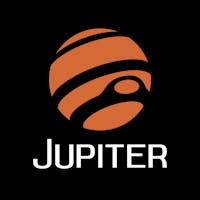A teacher’s initial assessment of an edtech tool may focus on such practical concerns as ease of use, integration potential, support and security. However, those responsible for designing education technology must, at all times, strive for something a bit more abstract and decidedly more lofty—improving the lives of their users.
Marie Bauermeister—who teaches world history, humanities, world religions and ancient civilizations for Grand Blanc High School in Grand Blanc, Michigan—knows a thing or two about the impact of innovation on society. In a recent conversation, she commented on edtech innovation and shared how some of her preferred classroom tools make life better for teachers and improve outcomes for students.
EdSurge: Name some of your favorite edtech tools. Why do these platforms stand out in your experience?
Bauermeister: First, I have to start with Jupiter. I have been a user now for 10 years. Our district fully adopted it three years ago. When the pandemic made us pivot to distance learning, Jupiter was truly a god-send. They have added so many new features that make teachers’ lives notably better. They have added a writable PDF feature that I utilize on a regular basis. I can upload a Google Doc into Jupiter and then my students can access it as a writable PDF. I can assess and provide feedback all through Jupiter. My students only have to be concerned with one entry point. They get their assignments, complete their work, submit their work and see their results—all in Jupiter.
There are some other interactive tools that I use as well. I like Edpuzzle a lot. It allows me to guide my students to what they need to know and directly to the takeaways from videos that we use. I can upload my video, create my questions and then connect everything to Jupiter. I also use Quizlet for reviews and Quizlet Live, which creates great competitions that my students really enjoy. Another tool that my colleagues and I use a lot is Pear Deck. It allows me to take any slide presentation and convert it into an interactive activity. Students can do the activity and get immediate feedback from me in real time.
I like tools where students can use critical thinking and content knowledge to help create questions. And students will often bring new tools or resources to me. For example, when using Quizlet Live, students wanted to use another application called Gimkit. I didn’t have time to implement this new tool, but why couldn’t they do it? I challenged them to put the activity together, and they did. I don’t have to be an expert in every application. When I turn it over to them, this creates student ownership and autonomy. It’s empowering for them to be able to do this.
Importantly, all the tools we use are integrated with Jupiter. Students don’t have to worry about separate logins. This is valuable for them and me.
What does good edtech product design mean for you? Is it evident when a tool is developed with educators in mind?
Teachers know what they need and what works. Some tools look good but have not been vetted by teachers. Jupiter is good this way. They continue to evolve the product based on teacher feedback and input. When they make updates, you can tell they have been listening.
When I send a message or a suggestion to Jupiter, I get immediate feedback. I had a teacher who had some technical issues, and the company contacted her immediately. Teachers are also sharing student feedback. With Jupiter, you can really tell that they value end user feedback.
Ease of use matters, too. We are so inundated by technology. We have a tech convention each year in Michigan, a two-day event. We get overwhelmed by what’s out there. We come home and see what is really worthwhile. If I can’t make it work quickly, then I will probably choose something else. Time is a limited resource; the tools that are more intuitive are going to rise to the top. That’s why teacher input is so important. What the general public sees as intuitive might be different than what I see as a teacher. Saving time is the bottom line.
As we’ve seen recently, products that are flexible make it easier to pivot when remote/hybrid learning becomes necessary. How have you and your colleagues leveraged edtech for success during the pandemic? Any long-term implications in this shift?
Currently, we have students who are quarantined. In order to keep them connected, we are expected to have a Google Meet going continuously. My students are therefore able to listen in and at least hear the instruction. This is a challenge for some teachers, but I think this type of connectivity is here to stay. I can see where students—who have to be out of school for any reason—can still keep up and not fall behind. For example, if we have homebound students, we can now accommodate them. It seems like we’re going to almost always have some sort of hybrid option.
The pandemic forced us to use these virtual collaboration tools. Now, it’s feasible for me to connect my students and classrooms to other high school students around the world. These tools and applications that maximize collaboration, interactivity and engagement are appropriate for any teaching and learning environment.
All of us have now seen the power of virtual collaboration. It’s safe, easy, convenient and very interactive. I can see lots of opportunities for teachers and classrooms to engage virtually with others—professionals, experts, guest speakers and other schools.



